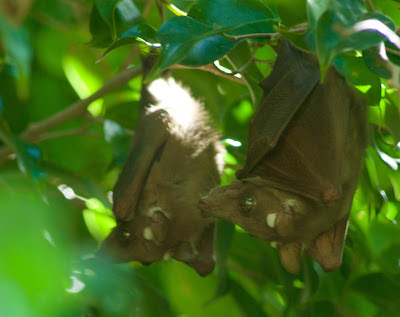Sugarplum the owl has joined us on campus for a few weeks. We are currently working on long flight training and "attack the gecko" skills so that release into the Elephant reserve can be achieved. Please pop in for a visit if you want to meet her.

A display of all the superb creatures found at Escuela Bella Vista in Maracaibo Venezuela, (and previously where I taught at the American international school of Maputo Mozambique). At least once a week a child brings me some arthropod or other creature to identify, play with or admire. This blog seeks to honor those avid inquirers. Unlike the Lorax who spoke for the trees, Ispeakforthefleas! Enjoy.
Saturday, October 22, 2016
Welcome Sugarplum
Sugarplum the owl has joined us on campus for a few weeks. We are currently working on long flight training and "attack the gecko" skills so that release into the Elephant reserve can be achieved. Please pop in for a visit if you want to meet her.
Friday, October 21, 2016
Bioblitz adventure to Macaneta
We have some good news to share with you about yesterdays Service learning day. The Bioblitz team went out for a few hours to Jays lodge in Macaneta. It turns out that a very special dung beetle lives out there.
The Vondeling boys, Wouter and Joris were hanging around at the back when they found two little dung beetles. I posted pictures of the scarabs to the ADU. It turns out that they were scientifically described only last year. Meaning that, had we found them last year they might have been named Scarabaeus vondelingensis. What we do out there really helps, The scientists now have a better idea of the range (distribution) of this particular gorgeous dung beetle. Well done team Bioblitz.
Thanks goes to Chistian Deschodt from the ADU for identifying our scarab.
Tuesday, April 12, 2016
A !Kwe (fossilized doughnut) unearthed by our building activities at AISM.
Confusion about these weird fossilized bagels is rife around
the world, it seems to be a stone age technology that can be found from the
Santa Barbara channel region, to the Congo, to the American school of
Mozambique. Our specimen was unearthed with the current building efforts at the
seaward side of campus. Yes, I was surprised to find it in the dirt after a
pipe was laid between the science and the math blocks.
There are records pretty much like the AISM specimen, in round
stone from the Gulf
Coast of Mexico, to the Guatemalan highlands and on some Pacific islands. These
petrified, perforated rock rings show a diversity of design that indicates a
similar diversity of uses.
Southern African San beliefs suggest that these so called
digging stick stones had a special significance beyond everyday use. Bushmen
women would communicate with Shamans and contact the spirit world by beating
the ground with a bored stone from a digging stick.
It would seem that although European explorers saw and
recorded both San and Bantu peoples using these stones, no-one recorded them
making them. The San themselves allegedly claimed that they found the stones already
drilled.
There is the possibility that they were also used as mace
heads, and some archaeologists feel that they were once used as currency. Well
there you have it then, the first ancient multi tool. Move over Swiss army
knife.
Noah with the !Kwe at the discovery site
Friday, February 5, 2016
AISM welcomes our most recent furry visitors: Epauletted fruit bats.
Epaulettes are a type of ornamental shoulder decoration used by armed forces as an indication of rank, and yes, the bats have them, but only the males, who use them to show off.
We have a small colony of around five Wahlberg's epauletted fruit bats (one with a baby) who have graced the fig trees in the primary playground. They are fruit eaters and may be here for the duration of the fruiting season. Thereafter that may choose to move on to another roost. It is a great privilege for us to have these friendly mammals here. Please treat them with respect. No loud noises please.
Subscribe to:
Posts (Atom)









